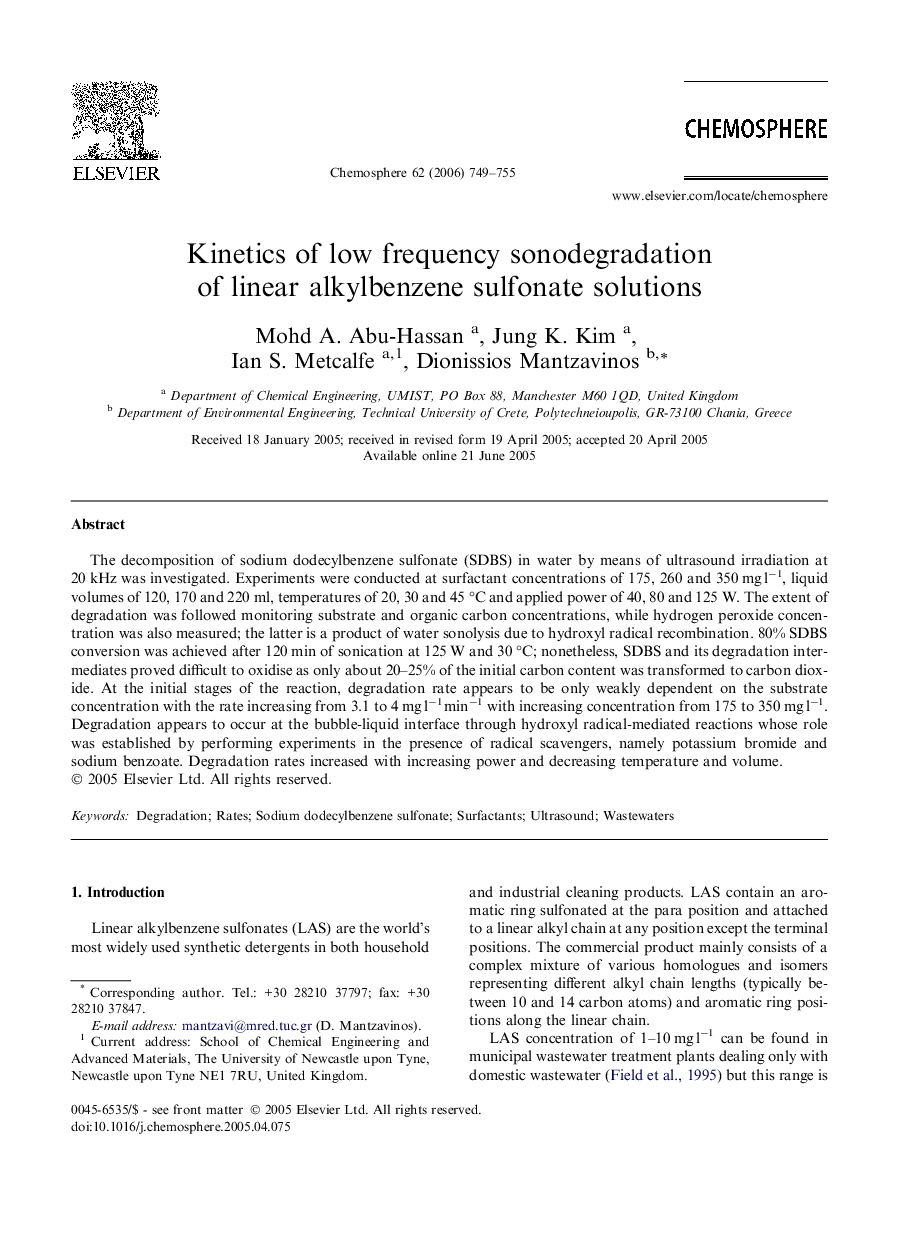| Article ID | Journal | Published Year | Pages | File Type |
|---|---|---|---|---|
| 4416848 | Chemosphere | 2006 | 7 Pages |
The decomposition of sodium dodecylbenzene sulfonate (SDBS) in water by means of ultrasound irradiation at 20 kHz was investigated. Experiments were conducted at surfactant concentrations of 175, 260 and 350 mg l−1, liquid volumes of 120, 170 and 220 ml, temperatures of 20, 30 and 45 °C and applied power of 40, 80 and 125 W. The extent of degradation was followed monitoring substrate and organic carbon concentrations, while hydrogen peroxide concentration was also measured; the latter is a product of water sonolysis due to hydroxyl radical recombination. 80% SDBS conversion was achieved after 120 min of sonication at 125 W and 30 °C; nonetheless, SDBS and its degradation intermediates proved difficult to oxidise as only about 20–25% of the initial carbon content was transformed to carbon dioxide. At the initial stages of the reaction, degradation rate appears to be only weakly dependent on the substrate concentration with the rate increasing from 3.1 to 4 mg l−1 min−1 with increasing concentration from 175 to 350 mg l−1. Degradation appears to occur at the bubble-liquid interface through hydroxyl radical-mediated reactions whose role was established by performing experiments in the presence of radical scavengers, namely potassium bromide and sodium benzoate. Degradation rates increased with increasing power and decreasing temperature and volume.
